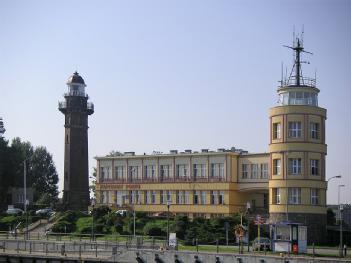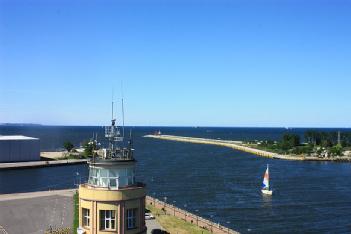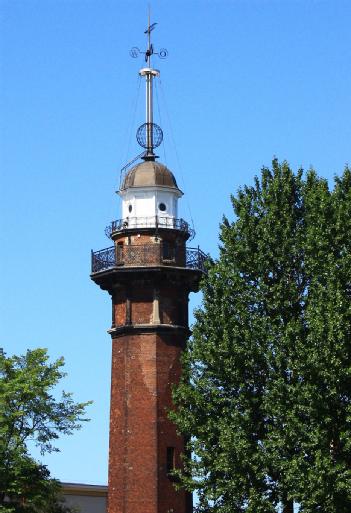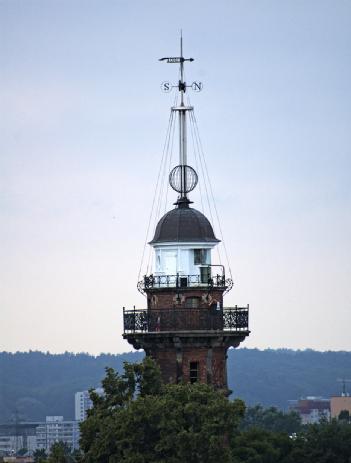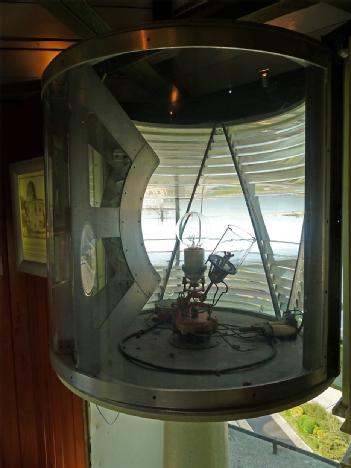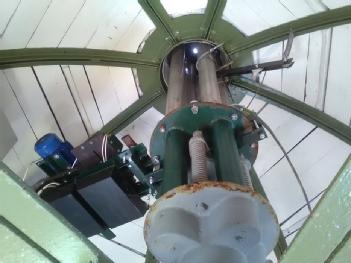
Latarnia Morska Gdańsk Nowy Port |
80-542 Gdańsk, Polonia (Pommern) |
|
| Indirizzo |
ul. Przemysłowa 6a
|
| Spazio espositivo | - purtroppo ancora non noto |
Lamps and Light
- Navy / Watercraft
- Surveying Equipment
- Clocks and Watches
- Ottica
|
Orario d'apertura
|
29th April – 31th August: Daily 10:00 – 19:00 1st-30th September: Saturdays and Sundays 10:00 – 17:00 1 V – 31 VIII: codziennie 10:00 – 19:00;
1–30 IX: soboty i niedziele 10:00 – 17:00 |
||||
|
Status dal 01/2018
|
normal ticket: 10 zł; concessionary ticket: 6 zł A 30% reduction on a ticket to the lighthouse is offered to passengers of the vintage tram and water tram bilet normalny: 10 zł; bilet ulgowy: 6 zł Zniżka 30% dla pasażerów tramwaju wodnego i tramwaju zabytkowego |
||||
| Contatti |
|
||||
| Pagina web | www.latarnia.gda.pl | ||||
| Come arrivare |
1. By car or coach – towards Gdańsk Nowy Port, free parking 2. By city transport – towards Nowy Port: FROM GDAŃSK CITY CENTRE: – Tram no. 10 to the stop “Plac Wolności.” Change here for tram no. 5 to the stop “Latarnia Morska.” – Tram no. 3 to Brzeźno. Change for tram no. 5 to the second stop “Latarnia Morska”. – Water tram F5 from Żabi Kruk to the Lighthouse, summer season only. – there is the chance to come to the lighthouse on a vintage tram from „Brama Wyżynna”, summer season only (a 30% reduction on a ticket to the lighthouse is offered to passengers of the vintage tram and water tram). FROM WRZESZCZ – Tram no. 5 to Nowy Port stop “Latarnia Morska” FROM SKM STOP GDAŃSK ŻABIANKA – Bus no. 148 do Nowy Port, stop “Zespół Szkół Morskich” + 10-15 minutes on foot |
|||
| Come arrivare (altra) |
1. Samochodem lub autokarem – kierunek Gdańsk Nowy Port, parking darmowy.
2. Komunikacją miejską – kierunek Nowy Port: ZE ŚRÓDMIEŚCIA GDAŃSKA: – tramwajem nr 10 do przystanku „Plac Wolności”, przesiadka na tramwaj nr 5 do przystanku „Latarnia Morska” – tramwajem nr 3 do Brzeżna, przesiadka na tramwaj nr 5, drugi przystanek „Latarnia Morska” – tramwajem wodnym F5 z Żabi Kruk do Latarni Morskiej – tylko w sezonie letnim – tramwajem zabytkowym z przystanku „Brama Wyżynna” – tylko w sezonie letnim Z WRZESZCZA – tramwajem nr 5 do Nowego Portu przystanek „Latarnia Morska” Z PRZYSTANKU SKM GDAŃSK ŻABIANKA – autobus nr 148, do Nowego Portu, przystanek „Zespół Szkół Morskich” + spacer 10-15 minut. |
|||
| Descrizione | The lighthouse at Nowy Port is one of the most attractive marine lighthouses in Northern Europe. WHEN ON A VISIT TO THE LIGHTHOUSE YOU MAY SEE THE FOLLOWING: – the interior with beautifully preserved historical optical devices – the marvellous view from the top of the building over the port of Gdańsk, Westerplatte and the entire Bay of Gdańsk as far as Gdynia and Hel – a fascinating exhibition about lighthouses and listen to the story of Lighthouse Keeper Jacek Michalak Time ball The Gdańsk time ball, the fist on the Baltic, was constructed in 1876 on a special wooden tower. In 1894 it was transferred to the top of the lighthouse at Gdańsk Nowy Port (which, although now a historical building, was then new). At the turn of the twentieth century Marconi’s invention of the radio marked the end of the usefulness of a time ball and when a storm tore off the ball in Gdańsk in 1929 it was not repaired. Today there are only a few time balls remaining in the world, including balls at Greenwich, Washington, Singapore and Lyttelton (New Zealand). In these port cities they are great tourist attractions as monuments to navigational technology in the nineteenth century and symbols of the historical maritime character of these cities. The reconstruction of the Gdańsk time ball was begun in 2006. The reconstructed time ball has a diameter of 1.6 metres and weighs 75 kilograms. When it remains in its resting position it is 36.5 metres above sea level (27.8 metres from the base of the lighthouse). In its cycle it travels 3.2 metres upwards in two stages and during its fall its mechanism begins to apply a brake just before the end of its course to weaken the impact on the (original) shock absorbers. With its time ball and mast, the lighthouse measures 36 metres from its base. At twelve o’clock noon on 21st May 2008 a ceremonial inauguration took place and the time ball was demonstrated for the first time. During the summer season its fall four times daily is an unusual attraction, as there are only a few such time balls in operation in the world today. Most of them, it should be noted, reconstructed. The fall of the time ball marks punctually the hours of twelve noon, and two, four and six in the afternoon, according to the extremely accurate DCF77 time-keeping system created at the Physikalisch-Technische Bundesanstalt in Braunschweig and transmitted on the 77.5 kHz long-wave band by the radio station at Mainflingen near Frankfurt-am-Main, a time-pattern whose precision has been defined as one second of acceptable accumulated error in 200,000 years! HOW DID THE TIME BALL WORK AT THE NOWY PORT LIGHTHOUSE? Five minutes before noon the ball was hoisted to half-mast. Three minutes later it travelled all the way to the top, and after another two minutes the signal, speeding by telegraph from the Royal Observatory in Berlin, released the mechanism. The falling ball meant that it was exactly twelve noon in Central European Time and in this way the captains of ships lying in the roads (and everywhere that the ball was visible) could set their marine chronometers accurately. |
| Descrizione (altra) |
Latarnia morska w Nowym Porcie to jedna z najpiękniejszych latarń morskich północnej Europy , mierząca 27 metrów wysokości, latarnia została zbudowana w 1893, a oddana do użytku w 1894 roku. ODWIEDZAJĄC LATARNIĘ MOŻNA ZOBACZYĆ: – wnętrze wraz z pięknie zachowanymi starymi historycznymi urządzeniami optycznymi Dane techniczne Wysokość wieży: 31,30 m Gdańską kulę czasu Gdańską kulę czasu zbudowano jako pierwszą nad Bałtykiem w roku 1876 na specjalnej drewnianej wieży, w roku 1894 przeniesiono ją na szczyt (wtedy nowej, dziś historycznej) Latarni Morskiej Gdańsk Nowy Port. Na przełomie XIX i XX wieku radio wynalezione przez Marconiego stopniowo eliminowało użyteczność kul czasu i kiedy w roku 1929 sztorm zerwał gdańską kulę czasu, już jej nie naprawiano. Odbudowę gdańskiej kuli czasu rozpoczęto w 2006 roku. JAK DZIAŁA KULA CZASU NA LATARNI W NOWYM PORCIE? Pięć minut przed godziną dwunastą kulę wciągano do połowy masztu. Trzy minuty później wędrowała ona na sam jego szczyt, a po kolejnych dwóch minutach sygnał biegnący linią telegraficzną z Królewskiego Obserwatorium Astronomicznego w Berlinie zwalniał jej mechanizm. Spadająca kula oznaczała dokładnie godzinę dwunastą w południe czasu środkowoeuropejskiego i w ten sposób kapitanowie statków stojących na redzie (i wszędzie tam, gdzie kula była widoczna) mogli dokładnie nastawiać swoje chronometry okrętowe. |
[dsp_museum_detail.cfm]
| Conformità dei dati | Ulteriori informazioni |
 latarnia.gda.pl
latarnia.gda.pl 